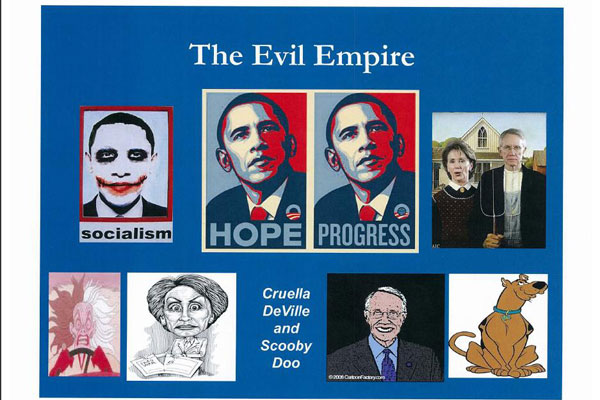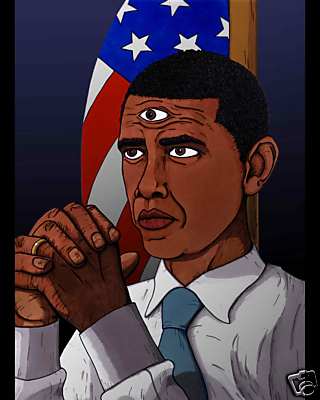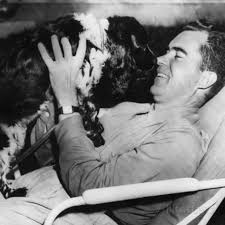An odd element of the manners of Black History Month which I thought I’d get to after that month ended. We meet up with some of the great Black Political Activists in American History. Frederick Douglas, even Booker T Washington, W E B Du Bois, Martin Luther King Jr. People who have read books you need to read.
But you know what? Let’s give up to the Political Hacks! Vilified in the most hypocritical of matters through the first half of the last century, called “venal” and “corrupt”, and “locusts”, they are responsible for the nomination and presidency of William McKinley, William Howard Taft, and Herbert Hoover. They functioned as any political party whose voting base had been systematically kicked off the voting rolls would.
A quick note from a book from Sarah Vowell, to note that I don’t think it’s quite accurate.
McKinley and Mark Hanna, already innovators in corporate campaign contributions, were the first Republicans to actively woo white (male) southern Democrats. (The two made a point of vacationing in Thomasville, Georgia — where Hanna’s brother Mel had bought a plantation for cheap — in 1895, where they planned the ’96 campaign and courted local pols.)
Another milestone in the history of how the party of Lincoln became the party of, say, late South Carolina senator Strom Thurmond […] — Sarah Vowell, Assassination Vacation, page 201
Nay, the disruption away from the “Party of Lincoln” and to the — well, Party of James Blaine, actually — probably best is pointed at the end of the Grant Administration. 1874 mid-term elections. The Democratic Party in the South forced into place a one party state with the instrument of the Ku Klux Klan, and the North quit caring.
A funny thing about this wikipedia article on “lily-whites“. There is no “Black and Tans” article, sequestered into the disambiguation page.
Black and Tans, a faction within the Republican Party (U.S. political party) based in the Southern United States and comprised primarily of African-Americans generally dependent upon the national party for patronage appointments from Reconstruction and continuing into the 1950s.[citation needed] The Black and Tans provided the only significant opposition to the white Democratic Party of the so-called Solid South.
The Republican nominees picked up whoever would give them the votes. The factions veered into the Republican Convention every four years moving into floor debate for who gets to be seated. Mark Hanna started the trend of selecting whichever delegation selection would give them the votes.
At the 1916 convention, the last one before state delegations were reapportioned on the basis of the number of votes cast in the last election, “Southern delegates occupied 348 of 987 seats, or 36.3 per cent of the total number of delegates.” This had been generally the case since 1876, the last year that Southern States gaave any electoral votes to a Republican Presidential candidate. Possessing one-third of the delegates in almost all conventions until 1916, the Lily-white and Black and Tan factions thus became crucial to any Presidential aspirant.
Even after 196, when the national convention moved to reduce southern representation because of its lack of vote-getting power, southern delegations still comprised nearly one-fifth of each successive national convention.
Such is the existence of a political party when organized terrorism disenfranchises its voting electorate.
“Many of the parting scenes,” states John Lynch, a Black politician in Mississippi during Reconstruction, “that took place between the colored men and the whites who decided to return to the fold were both affecting and pathetic in the extreme.”
Describing one such parting, Lynch says that the Black president of a local Republican club, Sam Henry, was urging a white ex-confederate Colonel James Lusk to stay within the party ranks for the benefit of all.:
“Oh! No, Colonel,” Henry cried. “I beg of you do not leave us. If you leave us, hundreds of others in your immediate neighborhood will follow your lead. We will thus be left without solid and substantial friends. I admit that with you party affiliation is optional, with me it is different. I must remain a Republican whether I want to or not. I plead with you, don’t go.”
“The statement you made, Henry, that party affiliation with me is optional,” the Colonel answered, “is presumed to be true; but in point of act it is not. No white man can live in the South in the future and act with any other than the Democratic Party unless he is willing to live a life of social isolation and remain in political oblivion. … Besides, I have two grown sons. There is, no doubt, a bright, brilliant, and successful future before them if they are Democrats; otherwise, not. If I remain in the Republican Party — which can hereafter exist in the South only in name — I will thereby retard, if not more, and possibly destroy their future.”
[John R Lynch The Facts of Reconstruction]
The wikipedia missive might have been off.
134 – 135 In 1928 Presidential hopeful Hebert Hoover used Black and Tan factions in various southern states to secure his nomination. After obtaining the nomination, he then “created, under the chairmanship of separate campaign committee “to drum up the white southern vote independently of the regular Black and Tan state organizations.” After his inauguration, Hoover praised the existing lily-white Republican organizations in the South and announced his full support for them. He removed such Black and Tan leaders as Ben Davis of Georgia, William (Goose Neck Bill) McDonald in Texas and Walter L. Cohen in Louisiana, turning their top state party positions over to whites. He also launched an investigation of Perry Howard, the head of the Mississippi Black and Tans, and Howard was subsequently removed from his position and shorn of party power under charges of bribery and sale of federal offices.
[…] White Democrats in Mississippi came to Howard’s aid and testified in his behalf. The chief justice and associate justice and the clerk of the state Supreme Court, some of the major newspapers in the South wrote editorials and numerous Democratic politicians wrote glowing letters and made speeches in his behalf. The basic reason for this support was that federal jobs obtained by Howard as patronage (or any other Black and Tan Leader) were often sold to White Democrats. Blacks could not hold positions like third and fourth class postmasterships in the South, so such positions and other jobs which could only be held by whites were sold to them by Black Republicans. There were never enough “White Republicans” to go around for all the available federal jobs in the South so they went to the Democrats. Hence, the gratitude and support for Howard.
WE Du Bois made the point that Perry Howard did just about the same thing, and played the same function, that the Lily White function Herbert Hoover was now favoring had been doing. Yet, the fight went on after Hoover won several southern states against his Catholic opponent.
Sadly, here is wikipedia’s stubby article on Perry Howard. The paucity of information isn’t the problem. The problem is it’s not linked up to the other Patronage Kings that were the Republican Party of the South, such as “Tireless Joe Tolbert” of South Carolina. Excerpts from Black Republicans: the Politics of the Black and Tans, Hanes Walton, Jr…. 1975.
However, in 1900, a white man, Joseph W Tolbert (nicknamed Tireless Joe or Fighting Joe– because he was a delegate or a contestant for a seat at every Republican national convention from 1900 to 1944) rebuilt the Republican Party in the state, organizing it into a unit which “consisted of himself, a few other whites, and several hand-picked negroes over the state”. The purpose of the Tolbert organization was to choose delegates to the national convention and to distribute patronage to its members, particularly to Tolbert. Tolbert added several blacks to ensure his group a seat at the national Republican Convention — racial composition was a major argument at credentials hearings and a mixed delegation usually fared better than a Lily-White one/ […]
Tolbert’s Black and Tan Republicans didn’t go unchallenged. Another white South Carolinian, seeing the befits accruing to Tolbert’s Black and Tans and understanding that occasionally the national convention seated lily white delegations, organized such a group for his own enrichment. This man, Joe Hambright of Rock Hill, in October 1930 organized his Republican group along the lines similar to Tolbert’s with only one exception — Hambright excluded Blacks. Hambright’s Lily – Whites, like Tolbert’s Black and Tans, made no effort to attract supporters or participate in state politics. They only challenged the Black and Tans at the national convention.
The efforts of Tireless Joe and Hambright made the South Carolina Republican Party a national joke and in 1938, J Bates Gerald, a wealthy lumberman, formed another Republican group to challenge the old Black and Tan and Lily White Groups. Gerald, understanding the importance of delegation composition, got three white “approved” blacks, all from the middle class, to dispose of Tolbert’s main argument at the national convention — that of racial composition. Moreover, while Tolbert’s Blacks were handpicked and considered safe and loyal to him, the Gerald – led Republicans selected their blacks to a convention or executive convention fashion. This strengthened their case and in 1940 […]
Beat Tolbert, 12 years later kicked out the blacks.





